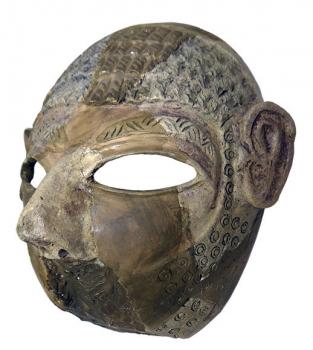American Journal of Archaeology | The Journal of the Archaeological Institute of America
You are here
Masks and Ritual Performance on the Island of Cyprus
January 2015 (119.1)
Masks and Ritual Performance on the Island of Cyprus
The island of Cyprus is well known for its abundance of masks, which have been the subject of focused studies as well as broader investigations on Phoenician and Punic masks. Yet, there is no comprehensive and diachronic overview of this important corpus contextualized within its Cypriot setting. This article reevaluates the evidence for masking rituals in Late Bronze and Iron Age Cyprus through close analysis of archaeological contexts and use patterns to reconstruct masked performances. The evidence underscores the long tradition of masking on the island and reveals use patterns that allow a partial reconstruction of the social significance of masking ceremonies. At the end of the Bronze Age through the era of the autonomous city-kingdoms, masks likely functioned as symbolic objects used in constructing social identities and can be associated with restricted groups practicing rituals at key sanctuaries. Masking rituals flourished within the autonomous city-kingdoms and dramatically ended with the incorporation of Cyprus into the Ptolemaic kingdom.
Masks and Ritual Performance on the Island of Cyprus
By Erin Walcek Averett
American Journal of Archaeology Vol. 119, No. 1 (January 2015), pp. 3–45
DOI: 10.3764/aja.119.1.0003
© 2015 Archaeological Institute of America


